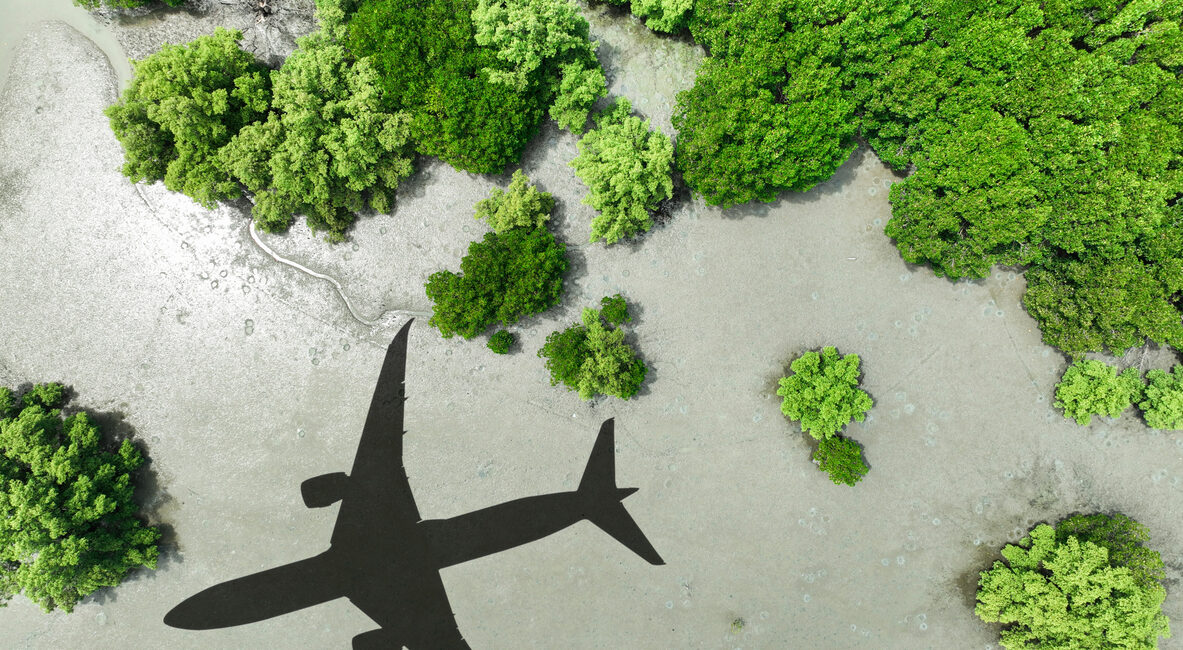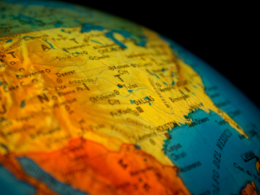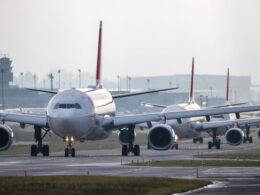High carbon lifestyles are a driver of climate change and tourism is a prominent feature of high carbon lifestyles. Carbon offsetting emerged as a possible solution almost 20 years ago. Airlines began to offer offsetting as an option for travellers to resolve their personal air travel emissions, but it never really took off. Despite becoming central to many airlines’ environmental commitments, very few passengers ever opted to offset their emissions.
So what is carbon offsetting? What are its merits and where has it got us?
Transcript:
In principle, carbon offsetting is very simple. It is relatively easy to calculate the emissions associated with anything we consume, from food to daily transport to leisure and tourism. For example, the carbon emissions associated with a flight can be calculated and then divided by the total number of passengers on the flight to know the carbon emissions per passenger. Passengers can then buy carbon credit from a broker to offset that amount of emissions. The broker subtracts its fee and uses the rest of the money to invest in an offsetting project, usually reforestation.
So what are the merits of carbon offsetting and what are the pros and cons?
Let’s be generous. There are a small number of pros. Carbon offsetting might make people think about their emissions and the level of emissions associated with different consumer decisions, such as the decision to fly.
It might also be a stepping stone to more decisive action on emissions. Or it might not, given the evidence to date. It is also an interim measure to address difficult to abate or unavoidable emissions. Air travel emissions fall into this category, particularly long haul air travel emissions. So it’s better to offset than do nothing at all about unavoidable emissions.
Unfortunately, there are lots of cons. Fundamentally, Carbon offsetting does not reduce emissions at source, which is what we know is urgently required. It delays meaningful action on emissions at various levels of the economy. We can think about the problem of offsetting at the global level, at the level of businesses and the economy, and at the personal or individual level.
At the global level, offsetting perpetuates climate inequalities. Carbon offsetting entrenches inequalities by allowing high emitters to continue to emit. For example, 50 % of global aviation emissions are produced by only 1 % of the global population. In fact, an estimated 90 % of humans have never flown in an aeroplane.
Tree planting also competes with other land uses, such as food production. George Monbiot has said that, quote, if everyone in the world ate like New Zealanders, we would need two planets to feed everyone. The same applies to other high carbon tourism activities like taking a cruise and flying.
The problem is that at the global scale, carbon offsetting is fundamentally flawed. We cannot offset our way out of the problem. Planting trees cannot possibly offset the sheer volume of anthropogenic emissions that we produce. We would very soon run out of enough space to plant more trees.
Carbon sequestration through reforestation also takes time, time measured in decades, which does not help us to halve global emissions by 2030. In the meantime, climate change is also undoing the efforts of carbon offsetting. Floods, droughts and wildfires destroy reforestation projects.
The 2022 Californian wildfires destroyed two decades of corporate carbon offsetting efforts in that state, releasing vast volumes of carbon dioxide into the atmosphere and the process.
What about the level of the business or the economy? The cynics argue that carbon offsetting is a business strategy that encourages continued unrestrained consumption of high carbon products by transferring responsibility from companies to their consumers. So it also delays making changes in our industries and in our economies. The longer we delay these changes, the harder it becomes to make them.
And then there’s the personal or individual level. Offsetting also encourages continued consumption by overcoming personal guilt. It allows wealth to be deployed to overcome climate accountability, which delays people from making meaningful changes in their own high carbon lifestyles. In fact, most people don’t bother offsetting their carbon, even though the cost is low.
Do you offset your emissions when you fly? I don’t. Very rarely do I offset my own emissions when I fly. In fact, the vast majority of travellers do not offset their emissions. This is because of lack of transparency. Consumers don’t know what they’re paying for, essentially. Lack of conviction. Consumers don’t know if it actually makes a difference. And lack of reason, consumers feel that they’re only really offsetting their own guilt.
These are reasons why the public have never really been convinced by offsetting. Because of these uncertainties, if you offset your emissions on a particular flight, you’re probably likely to be only one of one or two passengers on the flight to do so.
Two common questions arise when thinking about offsetting air travel …
Firstly, is it actually feasible to plant enough trees to offset all of the carbon produced by air travel? The answer is no. A study published in 2010 by Dr. Inge Smith and colleagues in physics at Otago calculated New Zealand’s land area that would need to be planted every year to offset the air travel emissions of international visitors to New Zealand at that time. Only international visitors arriving into New Zealand. The answer was the equivalent of Rakiura, Stewart Island, every year. That also assumes that all of those trees grow to maturity.
Secondly, how many trees would need to be planted to offset my flight? Well, a short flight from Auckland to Wellington produces around 62 kgs of CO2 per passenger. This figure varies with lots of variables such as aircraft type, weight of aircraft weather conditions, flight path, and flight time. For busy airports, flight time might be extended by stacking or queuing. The Wellington to Auckland or Auckland to Wellington flight can be offset for $1.50. How many trees would need to be planted to offset 62 kgs of carbon dioxide? The answer is approximately four or five Kanuka over 20 years.
One Kānuka will sequester about 14 kgs of CO2 over 20 years of growth. Again, this assumes that the trees that are planted survive. None of this is very convincing.
It seems that even without the science, public skepticism and lack of uptake are well founded. So it seems to me that carbon offsetting has had its day. Like many other potential solutions to so-called “difficult to abate” emissions, it has proved to not be a solution at all because carbon offsetting is fundamentally flawed.
Now attention is actually passed on to other potential solutions, such as sustainable aviation fuels and alternative energy sources, including hydrogen and electric.
Of course, it is critically important that we invest in technologies that may help us to mitigate emissions. But we do need to have honest science-based conversations about the possibilities, prospects and limitations of all so-called solutions. It’s important that we don’t put faith in capitalist fixes that sound compelling but actually only perpetuate consumption of high carbon products.
Unfortunately, after two decades, is clear that perpetuating unrestrained consumption has been the only real outcome of carbon offsetting.








